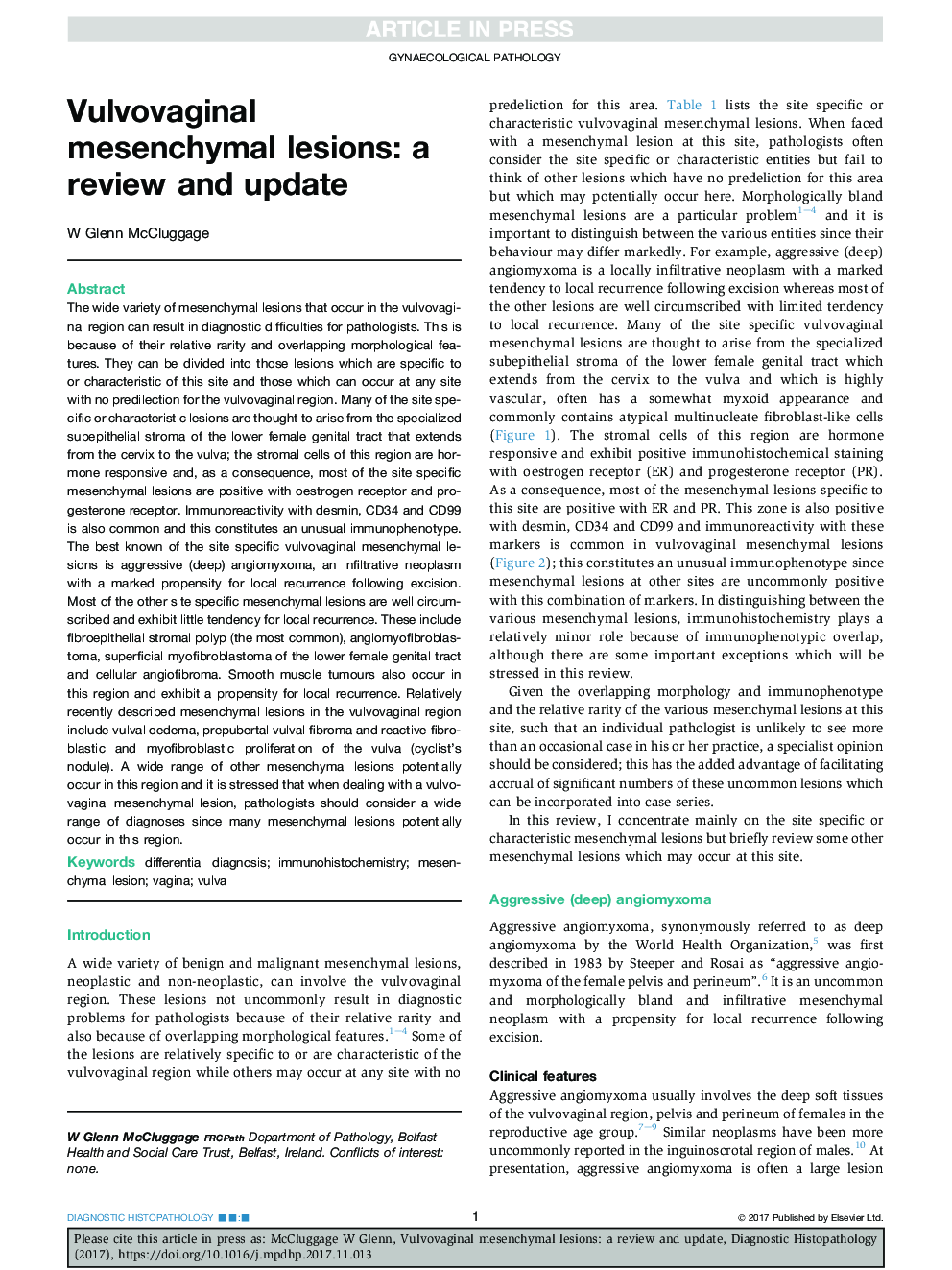| Article ID | Journal | Published Year | Pages | File Type |
|---|---|---|---|---|
| 8807326 | Diagnostic Histopathology | 2018 | 17 Pages |
Abstract
The wide variety of mesenchymal lesions that occur in the vulvovaginal region can result in diagnostic difficulties for pathologists. This is because of their relative rarity and overlapping morphological features. They can be divided into those lesions which are specific to or characteristic of this site and those which can occur at any site with no predilection for the vulvovaginal region. Many of the site specific or characteristic lesions are thought to arise from the specialized subepithelial stroma of the lower female genital tract that extends from the cervix to the vulva; the stromal cells of this region are hormone responsive and, as a consequence, most of the site specific mesenchymal lesions are positive with oestrogen receptor and progesterone receptor. Immunoreactivity with desmin, CD34 and CD99 is also common and this constitutes an unusual immunophenotype. The best known of the site specific vulvovaginal mesenchymal lesions is aggressive (deep) angiomyxoma, an infiltrative neoplasm with a marked propensity for local recurrence following excision. Most of the other site specific mesenchymal lesions are well circumscribed and exhibit little tendency for local recurrence. These include fibroepithelial stromal polyp (the most common), angiomyofibroblastoma, superficial myofibroblastoma of the lower female genital tract and cellular angiofibroma. Smooth muscle tumours also occur in this region and exhibit a propensity for local recurrence. Relatively recently described mesenchymal lesions in the vulvovaginal region include vulval oedema, prepubertal vulval fibroma and reactive fibroblastic and myofibroblastic proliferation of the vulva (cyclist's nodule). A wide range of other mesenchymal lesions potentially occur in this region and it is stressed that when dealing with a vulvovaginal mesenchymal lesion, pathologists should consider a wide range of diagnoses since many mesenchymal lesions potentially occur in this region.
Related Topics
Health Sciences
Medicine and Dentistry
Pathology and Medical Technology
Authors
W Glenn McCluggage,
